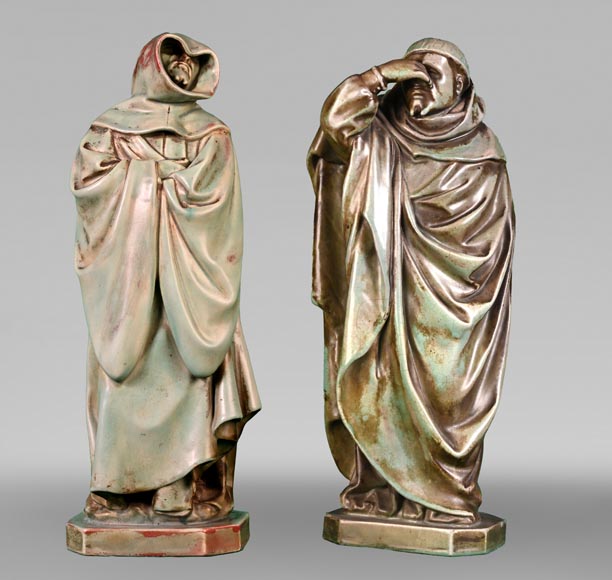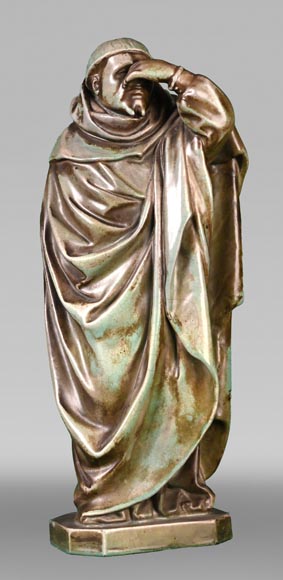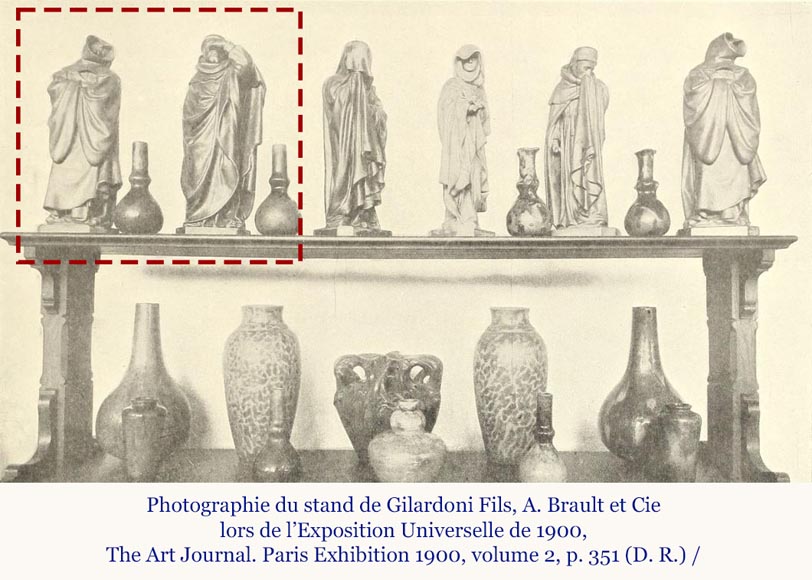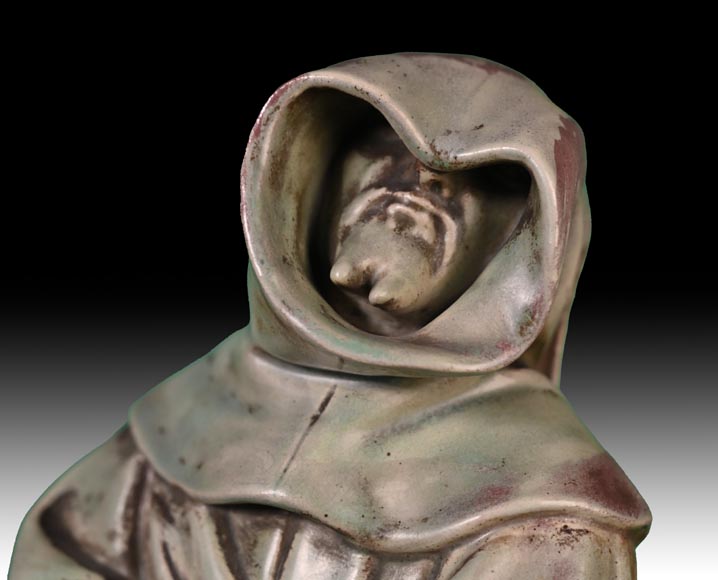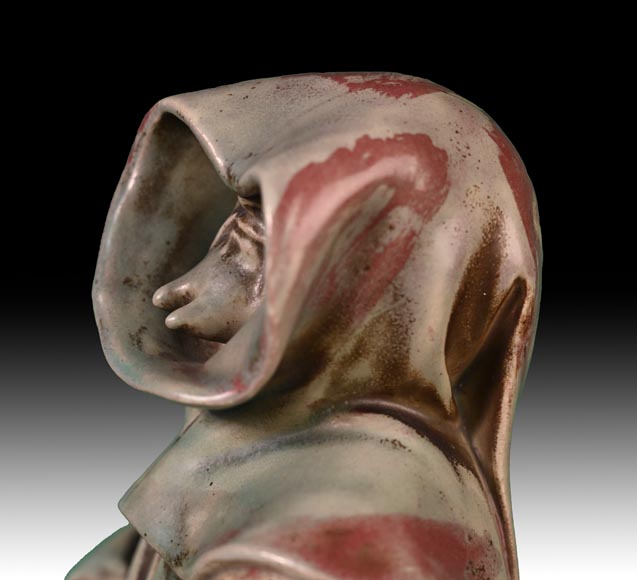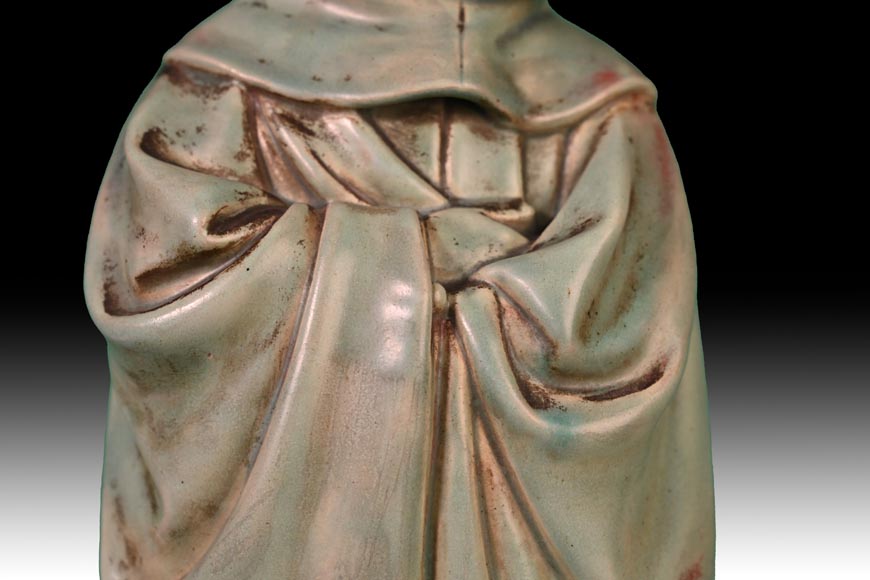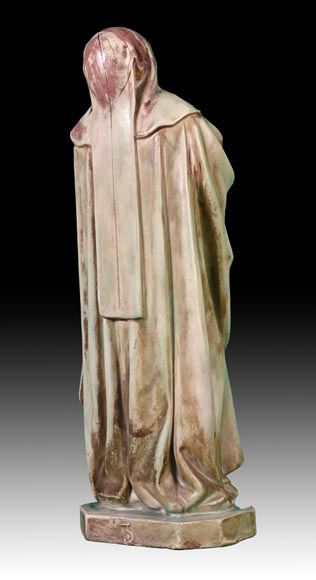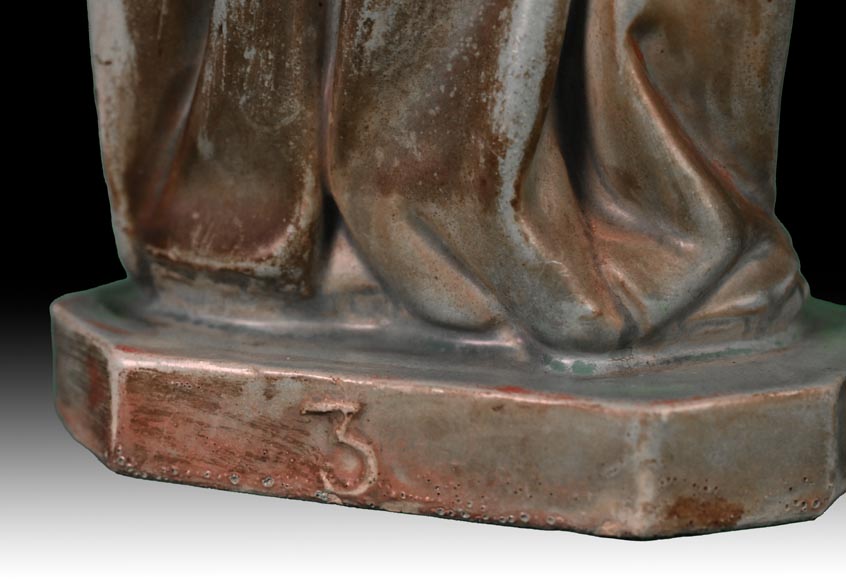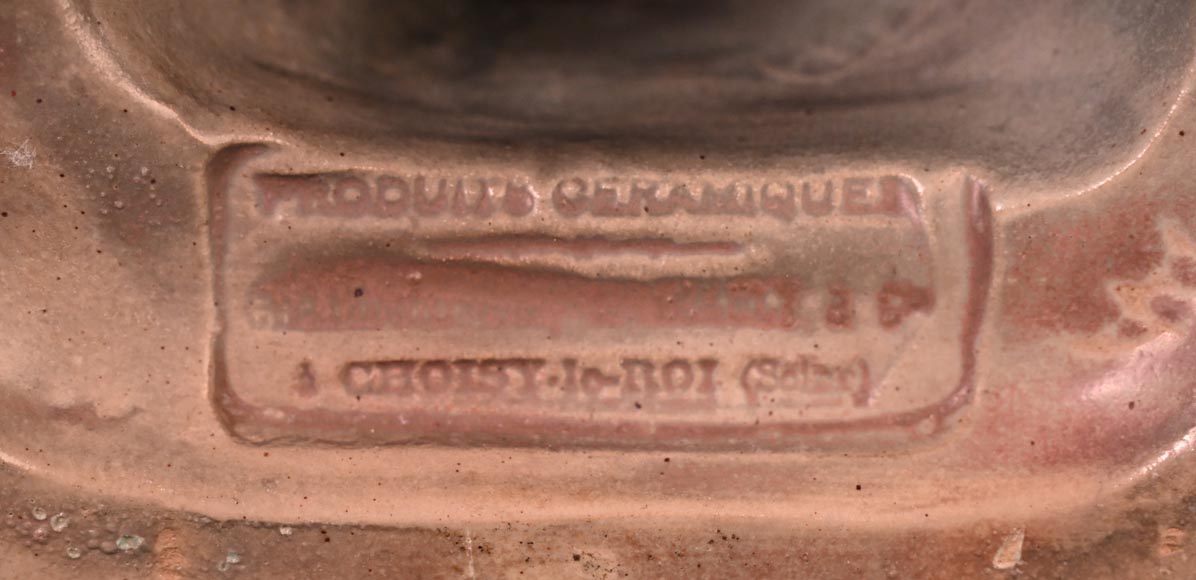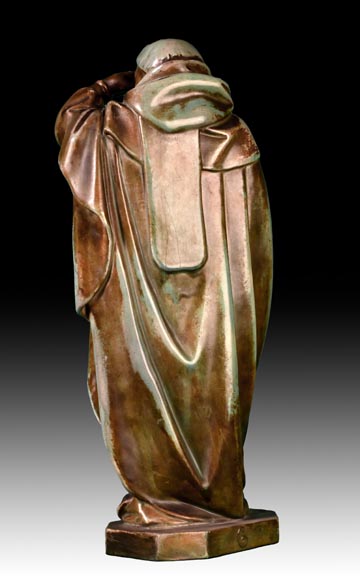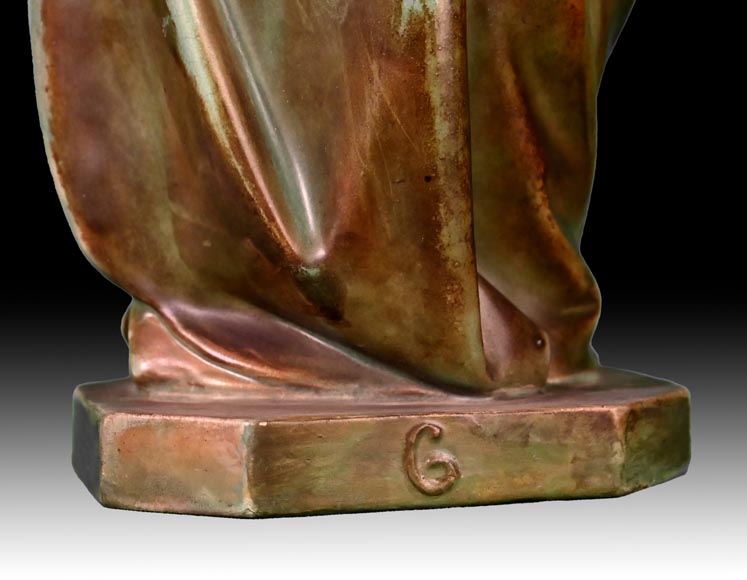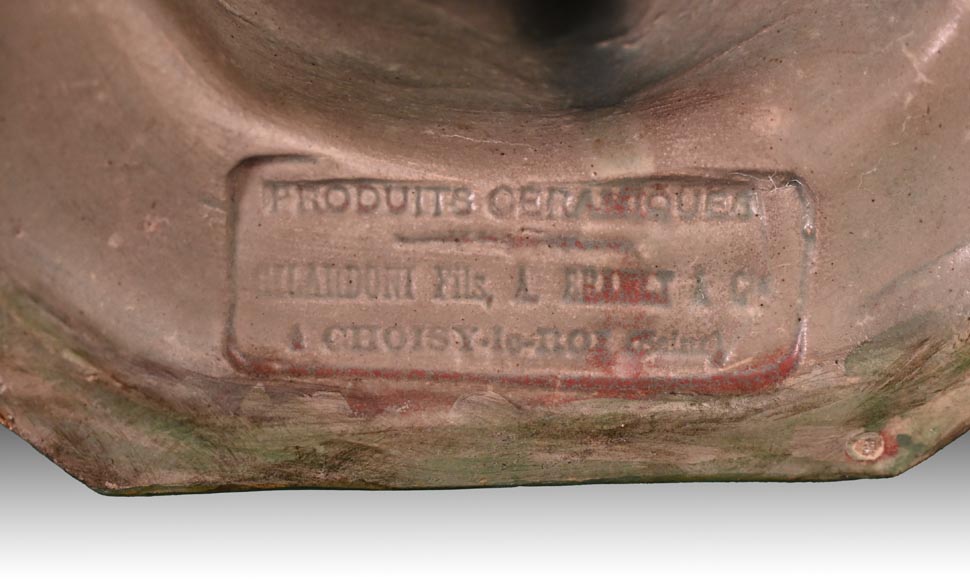Style Neo-gothic / Ref.15020
GILARDONI FILS & BRAULT tilery, Weepers, 1900 Paris Exposition
Dimensions
Width 6'' ¼ 16cm
Height 16'' ⅞ 43cm
Depth: 5'' ⅛ 13cm
Origin:
France, circa 1900
These ceramic mourners were created around 1900 by the tile factory Gilardoni Fils & Brault.
Founded in 1880 by Xavier Gilardoni, the son and nephew of the inventors of the revolutionary waterproof interlocking tile, and Alphonse Brault, the company was based in Choisy-le-Roi and produced decorative ceramic works.
The iconography of mourners has existed in funerary art since the 13th century. These figures traditionally represent grieving men surrounding the deceased. In the 15th century, Claus Sluter revitalized this tradition with the prestigious commission for the tomb of Duke Philip the Bold of Burgundy. The project, initiated by Jean de Marville, was significantly reworked by Sluter, who individualized each mourner with unique postures, notably through the use of large drapery.
The tomb of Philippe le Hardi is a masterpiece that revolutionized late 14th-century funerary sculpture, influencing subsequent works like the tomb of Jean sans Peur and Marguerite de Bavière, crafted by Jean de la Huerta and Antoine le Moiturier between 1443 and 1470. This latter tomb also features mourners inspired by those of Philippe le Hardi.
Nearly five centuries later, the mourners from these ducal tombs still captivated artists. Gilardoni Fils & Brault produced several versions of these figures, separating them from their original context and rendering them as stand-alone works.
The mourners here are notable for their expressiveness. The first figure, with its face hidden under a hood and arms crossed, leans slightly backward in a dignified expression of grief, resembling mourner No. 22 from Philippe le Hardi’s tomb by Sluter. The second figure, more humorous in nature, pinches its nose, perhaps due to the stench of death or to hold back tears. This figure echoes mourner No. 64 from Jean sans Peur’s tomb, which itself likely drew inspiration from the now-lost mourner No. 17 from Philippe le Hardi’s tomb.
The mourners by Gilardoni Fils & Brault were exhibited at the 1900 Paris Exposition alongside other works by the manufacturer. An old photograph published in The Art Journal. The Paris Exhibition 1900 (volume 2, p. 351) shows a series of six mourners, including the two currently at the Marc Maison gallery. The No. 22 mourner from Philippe le Hardi’s tomb is displayed twice, at each end of the shelf, showcasing the uniform quality of the reproductions. The Marc Maison gallery mourners bear the numbers 3 and 6 under their bases.
The photograph is accompanied by high praise for the manufacturer’s stand: “The works shown here were of a distinctly individual nature, and nothing finer of its kind than the little statuettes representing the “Monks of Dijon” was to be found in the Section” (The Art Journal. Paris Exhibition 1900, volume 2, p. 351).
While inspired by significant works from the early 15th century, these mourners are firmly rooted in their time, reflected in the use of ceramics and their inherent reproducibility, which allowed for wider dissemination, though such works remain rare today.



